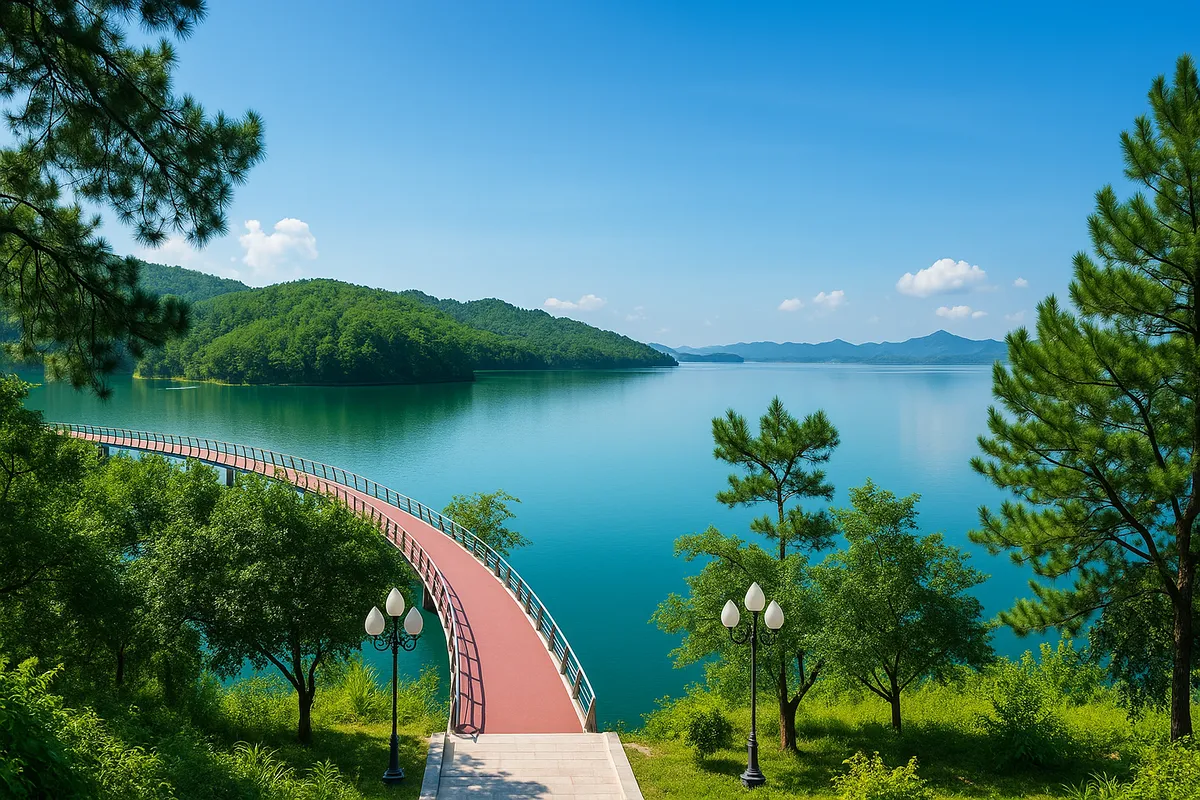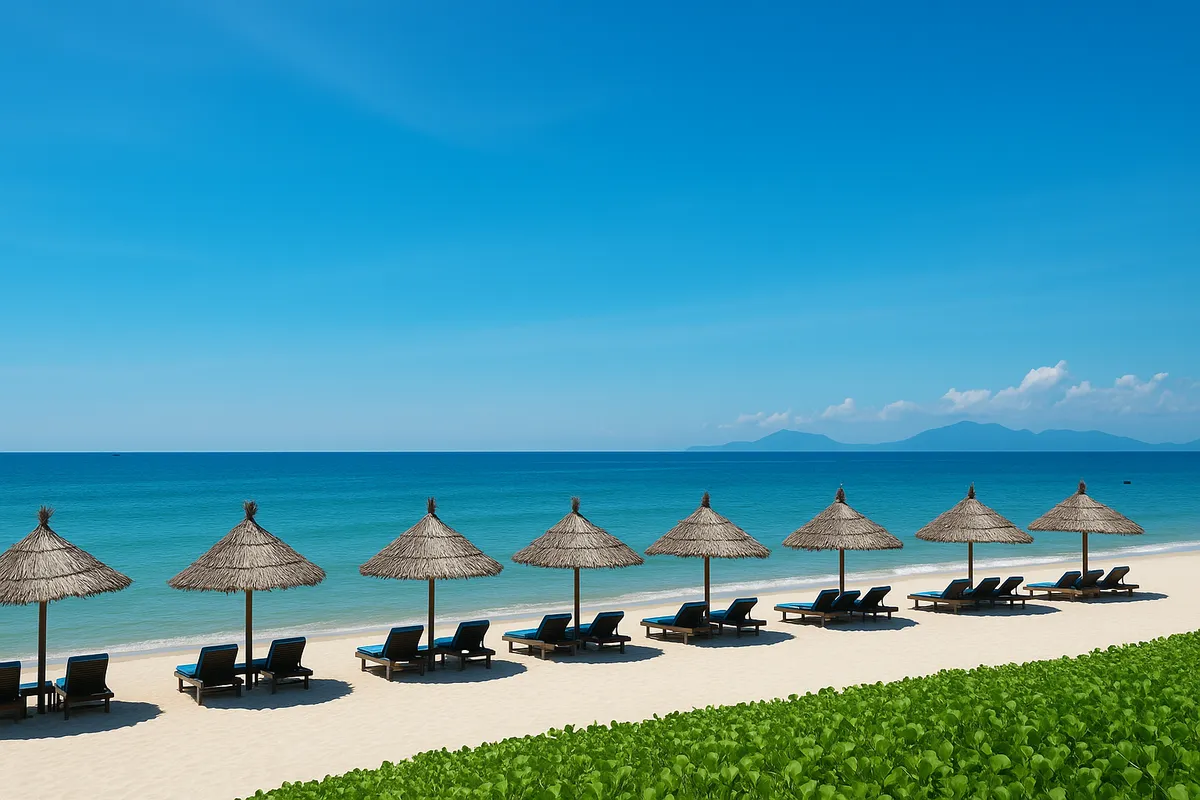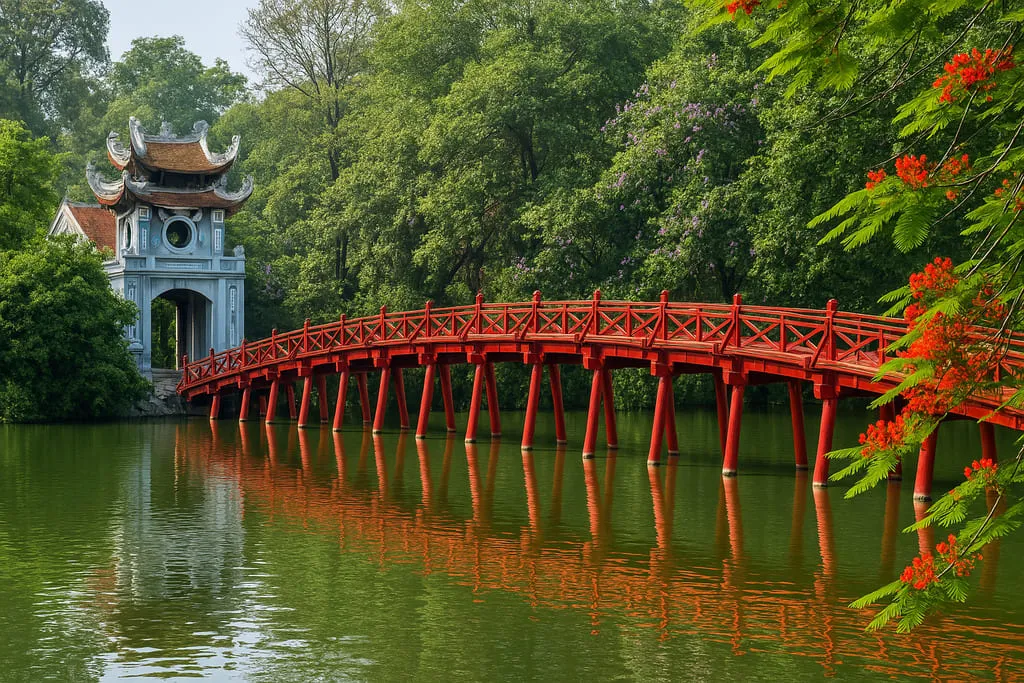Ke Go Lake and the green song in the mountains and forests of Ha Tinh
- Thursday, May 29, 2025, 15:48 (GMT+7)
Ke Go Lake and the green song in the mountains and forests of Ha Tinh
Ke Go Lake unfolds like a green silk ribbon stretching across the midlands of Ha Tinh, where the sky and earth merge into a tranquil watercolor painting. As the first light of day touches the surface, the lake glistens like a mirror reflecting the layered forest. In the chorus of jungle birds and the fresh scent of grass rising from damp soil, this is not just a scenic wonder but a space where memories and emotions intertwine, where people pause and listen to stories told by the wind and water.
Located about twenty kilometers southwest of Ha Tinh city, Ke Go Lake is a monumental irrigation work built in the late nineteen seventies. But perhaps nature has shown too much favor here, pouring into the lake basin a rare and pristine ecosystem, turning a technical structure into a landscape masterpiece. With a capacity of over three hundred fifty million cubic meters of water, it not only nourishes the fields downstream but also captures the magical blue of the sky and the deep hues of ancient forests on its surface.
Morning at Ke Go feels like a thin veil covering untold stories. From the endless forests comes a humid breeze carrying the scent of fallen leaves and wildflowers. Birdsong echoes from the mountain slopes across the lake as if calling each other toward the light. The lake at that moment is so still that even a falling drop of dew is clearly heard, like the gentle breath of nature awakening. Every moment here deserves to be a picture without needing any filter. A place where simply standing still reveals a whole world moving softly in silence.
Few know that this poetic land was once a fierce battlefield during the war against America. The Libi airfield was once located here, welcoming and bidding farewell to unnumbered flights amid intense jungle battles. Today, the airstrip has quietly vanished beneath dense forest, leaving only moss-covered concrete slabs lying like bleeding memories, a reminder of a time not so distant yet already steeped in legend.
Deeper into the protected zone, the Ke Go special-use forest emerges as a biological symphony, home to hundreds of rare species of flora and fauna, including the endangered Ha Tinh langur. These natural forests stretch across three districts, spanning thousands of hectares like a vast green cloak that shelters life. There is a little known truth that if one stays quiet long enough, they may hear the sound of a leaf touching water, and with a bit of luck, catch the silent footprint of a white-shanked langur on a trail carpeted with ferns.
On a low hill by the lake stands the memorial temple of the late General Secretary Le Duan. Modest yet dignified, it sits not far from the lake, serving both as a place of remembrance for a great son of the nation and as a connection between nature and history, between today's people and the values once paid for with blood and belief. From the temple yard, the lake mirrors the sky and mountains below, gently affirming that life continues through the simplest things.
More than just poetic scenery and historical depth, Ke Go Lake is also a destination for slow living. There are no honking horns, no crowds typical of popular tourist spots. Only the soft flapping of tent roofs in the wind, the murmur of water lapping the shore, and the calm afternoons spent fishing in the golden light. The bridge leading to the temple, with its graceful curve over the jade green water, is a beloved check-in spot. Every step across it feels like a slice of tranquility, walking through the present while entering a deeply spiritual space.
The best time to visit Ke Go Lake is from April to October. When the rains have ceased and the sun returns gently, awakening the slumbering forest patches, the lake becomes so clear one can see schools of fish swimming just beneath the rippling surface. In early summer, this place becomes a refreshing pause for the mind. The way to the lake is easy to follow. From Ha Tinh city, take Highway 1A toward Cam Xuyen, then turn west. Just an hour’s motorbike ride and the destination is reached. Along the road, rows of straight casuarina trees and scattered rooftops among the fields create a rustic path leading into the forest.
For those who linger longer, small local eateries offer regional specialties such as salt-roasted hill chicken, carp soup with pickled vegetables, or sweet cassava leaf stew. Every dish carries the flavor of the land and the warmth of Nghe people, simple yet unforgettable. But it is important to remember not to leave a trace. Even a broken branch or a forgotten plastic bag is out of tune with the gentle rhythm of the forest.
Ke Go Lake is not just a place to see, but a place to feel. Unlike many bustling destinations, it offers a chance to have a conversation with oneself, by stepping away from modern life and letting nature soothe the invisible wounds. Someone once carved on a rock near the lake, “Only in silence before nature can we hear the voice within.” These words feel like a caption meant for Instagram, brief yet deep enough to carry in the heart.
Few people realize that beneath the vast lake once stood villages and fields, home to old memories. During the construction of the lake, hundreds of families relocated, leaving behind a rural culture now submerged. Sometimes when the water recedes, the faint remains of old pillars and stone foundations reappear, like village spirits still lingering. It is no coincidence that locals call the lake the forest's eye, for it holds the memory, history, and soul of this land.
As evening falls, Ke Go Lake dons a different attire. The water turns amber, and clouds drift slowly across the distant peaks. There is something almost fairy tale-like in that moment, when the entire landscape seems to hold its breath, waiting for something to be written in the light of sunset. Those who have circled the lake at dusk cannot forget the final golden rays shimmering on the surface like a silken carpet, while shadows of forest canopies stretch long as if touching the soul.
Ke Go Lake is not merely a place to pass through, but one to stay with. Not because there is so much to do, but because there is so much to feel. It is where one goes to escape the city, to hear the call of nature, to remember that amid the imbalance of modern life, everyone still needs a place to return to, even if only briefly.
And perhaps when leaving, one carries nothing but a soft sigh, enough to make the soul feel light like a leaf floating on water. A place where even a single visit is enough to leave the heart longing forever.

 CHECKIN.VN
CHECKIN.VN








Share on